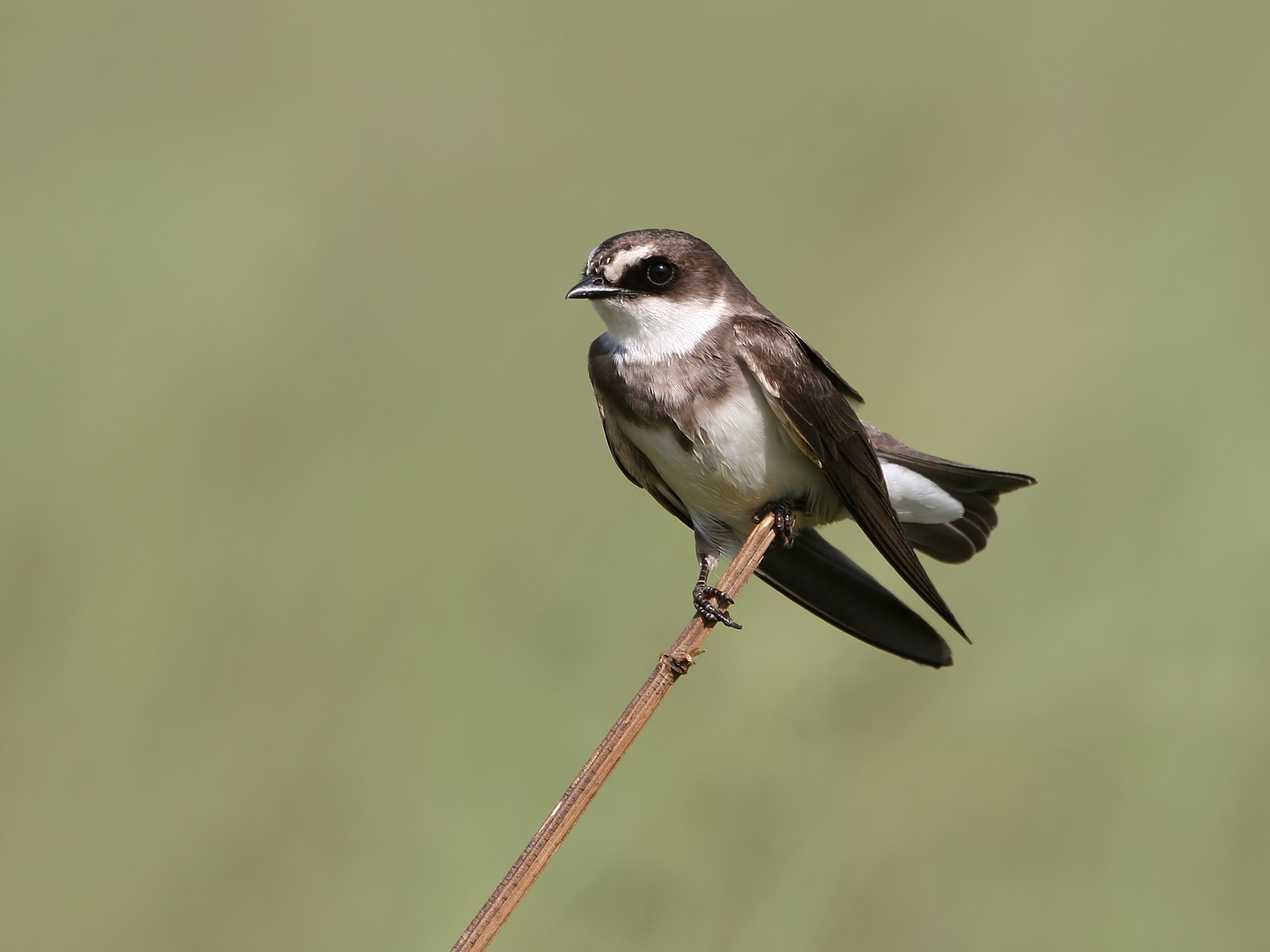The Banded Martin, also known as the Banded Sand Martin and Riparia Cincta, is a small passerine bird categorized under the Hirundinidae family, a family of birds endemic to the African continent.
The Hirundinidae family, which is commonly known as swallows, saw-wings, and martins, breeds on every continent across the world except Antarctica. Bird species under this family include African River Martin, Square-tailed Saw-Wing, Grey-Rumped Swallow, Welcome Swallow, Purple Martin, and Blue Swallow.
This bird species was first described in 1780 by a French mathematician, cosmologist, and naturalist named Georges-Louis Leclerc, Comte de Buffon in his encyclopedic collection named “Histoire Naturelle des Oiseaux.” Its first specimen came from the Cape of Good Hope. Comte de Buffon’s description was paired with an illustration of the bird by French naturalist François-Nicolas Martinet. It was only three years later when a Dutch naturalist named Pieter Boddaert came up with a binomial name for the bird species: “Hirundo cincta.”
Today, the Banded Martin is one of the six species categorized under the Riparia genus, which German naturalist Johan Reinhold Forster introduced in 1817.
Since Banded Martins occur in a vast range and the population is on a continuous rise, the International Union for Conservation of Nature (IUCN) Red List classified this bird species as least Concern. The general population was assessed in 2016.
Its seven levels of scientific classification are as follows:
Kingdom: Animalia
Phylum: Chordata
Class: Aves
Order: Passeriformes
Family: Hirundinidae
Genus: Riparia
Species: R. cincta
The physical characteristics of a Banded Martin
The Banded Martin is commonly characterized by a dark brown breast band across the chest and a white stripe above the eyes. This bird species has earth-brown upper parts, while the underparts are white. The underwing covers are white as well. Sometimes, there appears a slight dark mark across its vent.
Male and female Banded Martins look the same. Compared to an adult Banded Martin, juveniles usually have a paler breast band across the chest. The tips of their upper part feathers have golden tips.
The Banded Martin is considered the largest Riparia species, which grows between 15 and 17 cm and weighs between 20 and 23 g. This bird species is unmistakable from smaller sand martins, which have square tails and white underwings.
The distribution and habitat of Banded Martins
The Banded Martins are widely distributed across the African continent, except in some parts in the northern region. This bird species has five subspecies that occur in different areas in the continent.
- c. erlangeri – Ethiopia
- c. suahelica – South Sudan, west Kenya, north Zimbabwe, and western Mozambique
- c. parvula – southwest Congo, Angola, and northwest Zambia
- c. xerica – west and south Angola, north Botswana, and Namibia
- c. cincta – South Africa, south Zimbabwe, and southeast Botswana
Banded Martins frequent in a wide range of habitats, including shrublands, woodland and grassland savannas, wetlands, marshes, and artificial or terrestrial areas.
The behavior of Banded Martins
This bird species is sociable—they form in big flocks with others of its kind or other swift and swallow species. Its flight is characterized by a slow, erratic soar. It frequently perches and observes prey. Its loud, flight call sounds like “che-che-che,” while its song is a jumble of “chip choop” melodies.
Unlike other Riparia species, the Banded Martin does not exhibit territorial nesting habits. Its nest is usually located at the end of a long tunnel, which measures from 24 to 35 in. Together, Banded Martins excavate until it looks like a sandbank or earth mound. The actual nest is an assemblage of feathers and straws in a chamber located at the tunnel’s end.
A female Banded Martin lays two to five white eggs. Both male and female Banded Martins incubate the eggs before they hatch.
This bird species is tolerated by humans. They play a beneficial role as insect eaters, which are deemed pests by humans. Banded Martins are highly adaptable to their habitat. Therefore, they can nest in and around human habitation comfortably.
The diet of Banded Martins
Banded Martins are no different from other passerine birds. They are insectivorous—they catch flying insects on the wing. They eat a variety of insects, but they are avoiding stinging insects like wasps and bees.

